

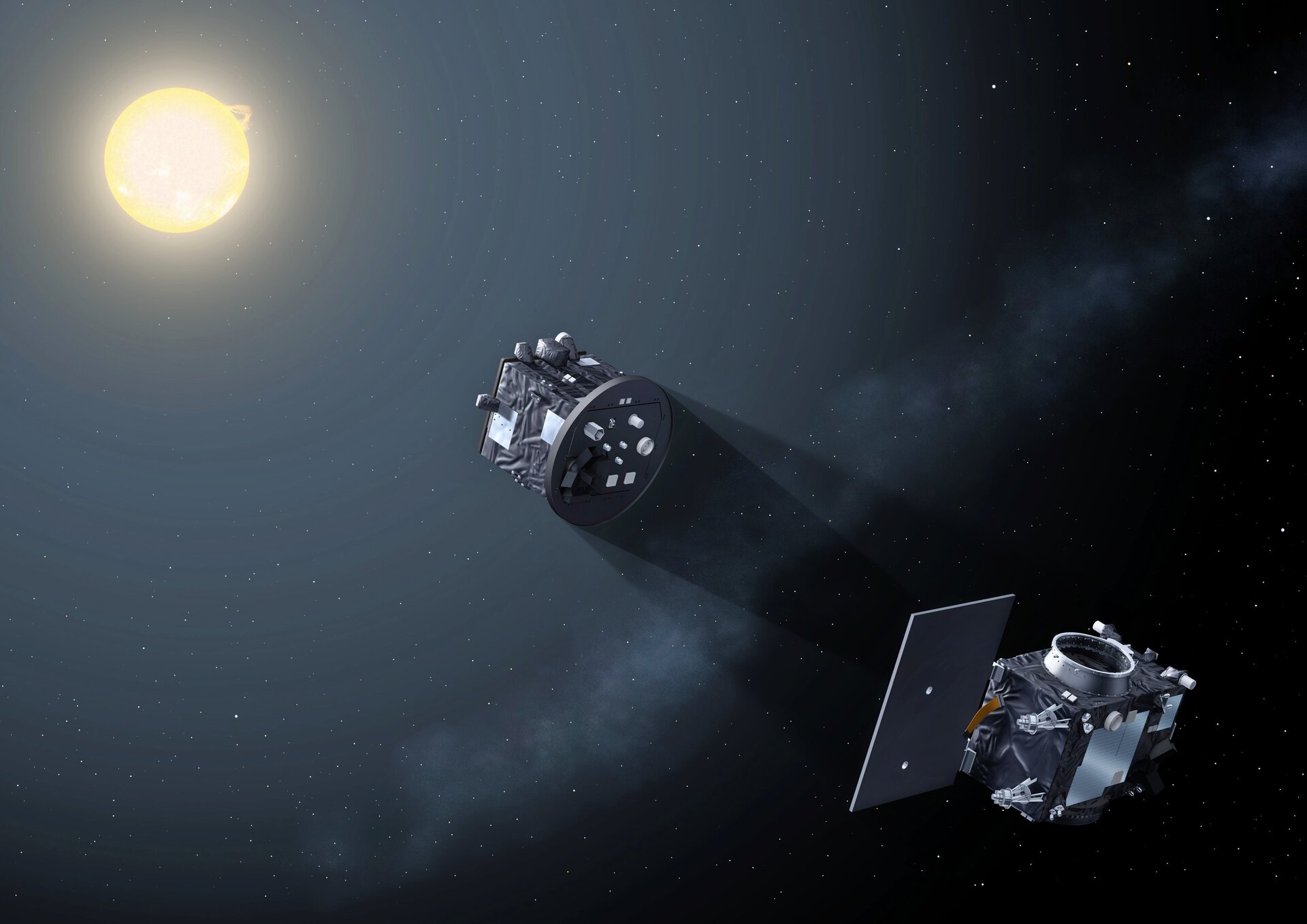
Following the recent Total Solar Eclipse, ISRO and ESA are partnering to launch Proba-3 spacecraft, which will use precision formation flying to artificially create solar eclipses in space. This innovative mission will allow for closer study of the Sun's mysterious corona and provide valuable insights into space weather. With cutting-edge technologies and precise coordination, Proba-3 is set to launch via the PSLV from India's Satish Dhawan Space Centre. Once in orbit, the spacecraft will autonomously perform formation flying, enabling six hours of observation per orbit and bridging the observational gap between the low and high corona.
Proba-3 Mission: Unveiling the Secrets of the Sun with Artificial Solar Eclipses
Following the spectacular Total Solar Eclipse in October 2023, the Indian Space Research Organization (ISRO) and the European Space Agency (ESA) are embarking on a groundbreaking mission to launch the Proba-3 spacecraft. This innovative mission will harness precision formation flying technology to create artificial solar eclipses in space, offering scientists unprecedented opportunities to study the Sun's enigmatic corona.
Background: The Importance of Studying the Corona
The corona is the outermost layer of the Sun's atmosphere, extending millions of kilometers into space. It plays a crucial role in space weather phenomena that can impact Earth's communications, power grids, and even astronauts in space. However, the corona is notoriously difficult to observe due to the Sun's intense brightness.
Proba-3 Mission: Artificial Solar Eclipses
The Proba-3 spacecraft will be launched into an elliptical orbit around Earth. Once in orbit, it will autonomously perform a complex formation flying maneuver with two separate instruments: Coronagraph 1 and Coronagraph 2.
By positioning Coronagraph 1 slightly ahead of the Sun and Coronagraph 2 precisely behind, Proba-3 will create artificial solar eclipses. During these eclipses, Coronagraph 1 will block the Sun's direct light, allowing Coronagraph 2 to capture detailed images of the corona.
Scientific Objectives
The Proba-3 mission aims to address several fundamental questions about the Sun's corona, including:
By studying the corona in unprecedented detail, Proba-3 will provide valuable insights into these phenomena and improve our understanding of space weather.
Launch and Timeline
The Proba-3 spacecraft is scheduled to launch in 2024 via the PSLV rocket from India's Satish Dhawan Space Centre. Once in orbit, it will begin its formation flying operations, enabling up to six hours of coronal observations per orbit. The mission is expected to have a lifespan of at least two years.
Top 5 FAQs
What is the purpose of creating artificial solar eclipses?
How long does each artificial eclipse last?
What instruments are used on Proba-3?
When is the Proba-3 mission expected to launch?
What is the scientific significance of the Proba-3 mission?
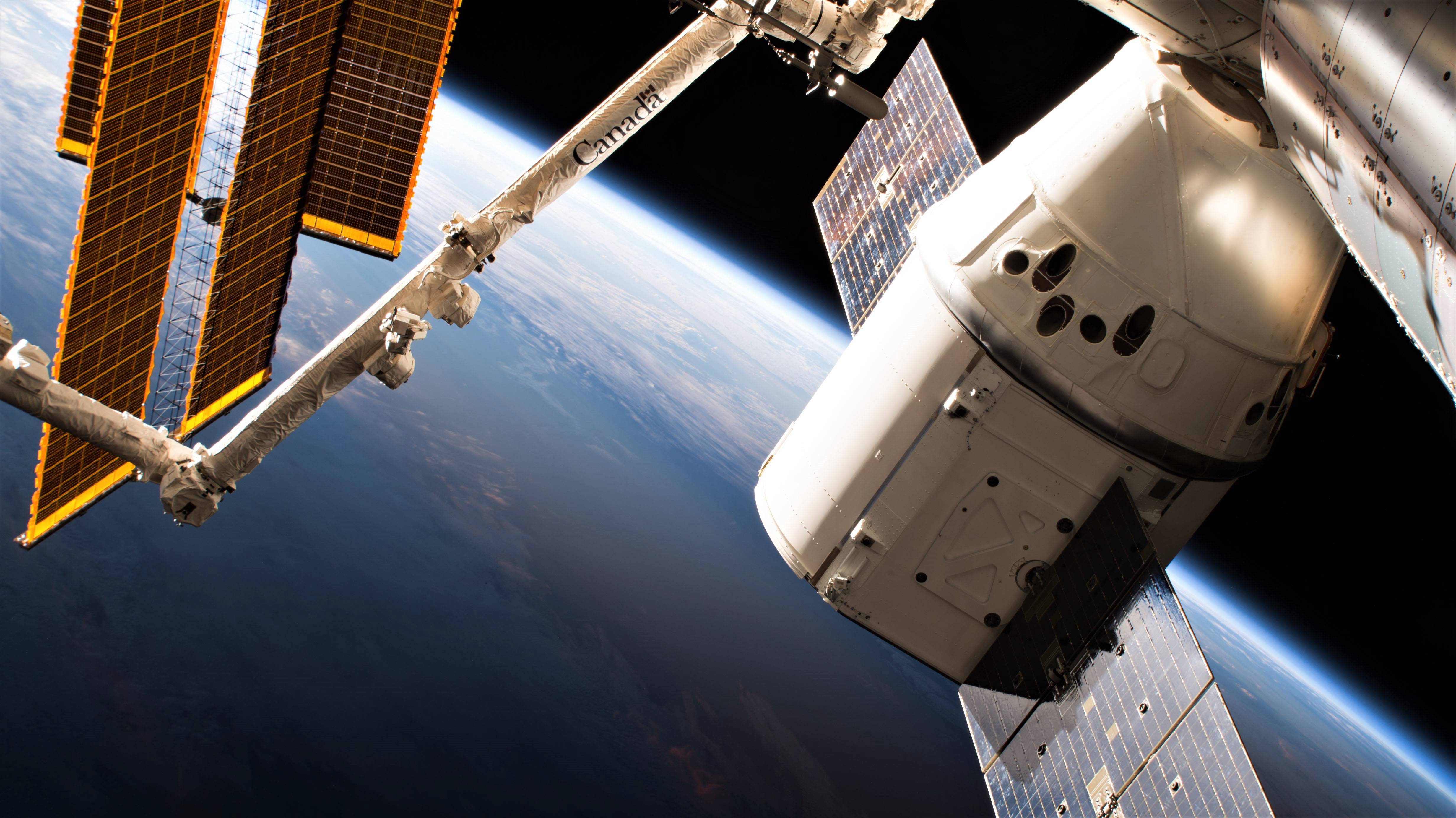
In a dramatic return, a SpaceX Dragon capsule splashed down off the coast of Oceanside last night, carrying 6,700 pounds of equipment and cargo from the International Space Station. Among the items returning to earth were materials that were exposed to space to study the effects of ultraviolet radiation, and 5 books used in NASA's Story Time from Space project. These STEM-related books were read and experimented upon by crew members aboard the space station for the educational project.

World Multiple Sclerosis Day is observed every year on May 30 to raise awareness about the condition, which affects over 1.8 million people globally. While there is no cure for MS, there are ways to manage its symptoms. Here are some tips from Johns Hopkins Medicine, including the importance of diet and exercise, creating a safe and efficient living space, and connecting with support groups. Disclaimer: Always consult a medical professional before making changes to your lifestyle.
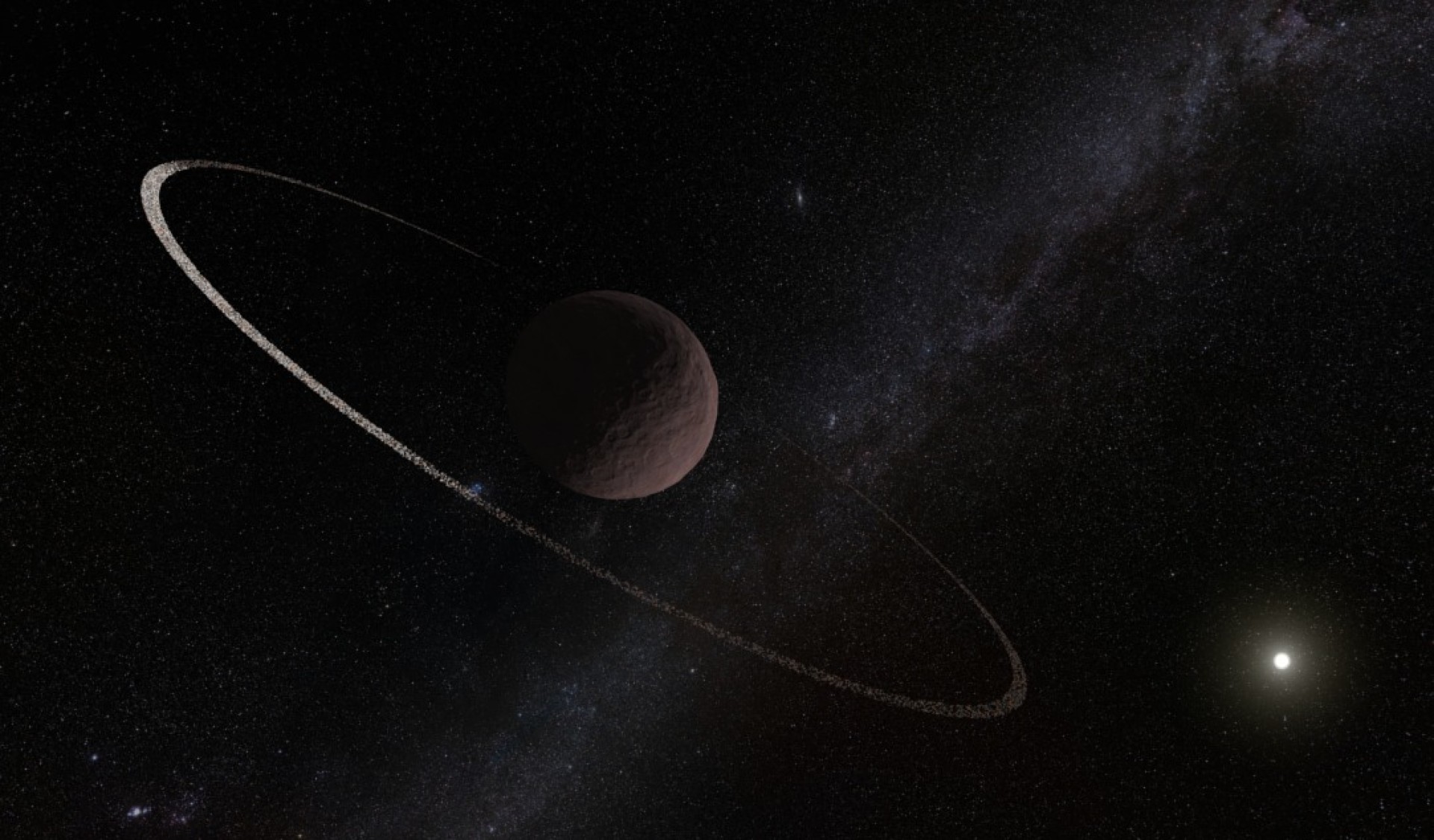
A team of astronomers led by Sihao Cheng has discovered a new dwarf planet, 2017 OF201, beyond the orbit of Pluto. The distant object has an orbital path that takes it 25,000 Earth-years to complete one revolution around the sun. Its discovery may provide insights into the mysterious "Planet 9" and its effect on objects in the outer solar system.

The ancient science of Ayurveda is gaining global recognition as a powerful ally in the quest for sustainable health. At Himalaya Wellness Company, their approach combines traditional wisdom with cutting-edge scientific validation and advanced technology. This convergence is driving the resurgence of Ayurveda and is expected to reach a market size of USD 26.26 billion by 2032. With the World Health Organization's recent validation and digital innovation opening access to previously untapped markets, the future of healthcare is being transformed by this ancient knowledge meeting modern science and technology.

A new report from Climate Central has shown a concerning increase in extreme heat in Kansas, leading to an average of 25 pregnancy heat-risk days annually. This poses serious risks for pregnant women, from preterm birth and pregnancy loss to gestational diabetes. Doctors are urging pregnant women to take precautions and listen to their bodies, including staying cool and hydrated, and being aware of any National Weather Service heat advisories in effect.

India's young cricket sensation, Shubman Gill, has been named the captain of the country's Test team in what is seen as a move towards the future. Gill, who hails from a small village in Punjab, has been widely touted as the next big thing in Indian cricket with his consistent performances and calm demeanor. At just 25 years of age, he has the responsibility of leading India in the longest format of the game, and will no doubt be looking to emulate the success of his predecessor Virat Kohli.
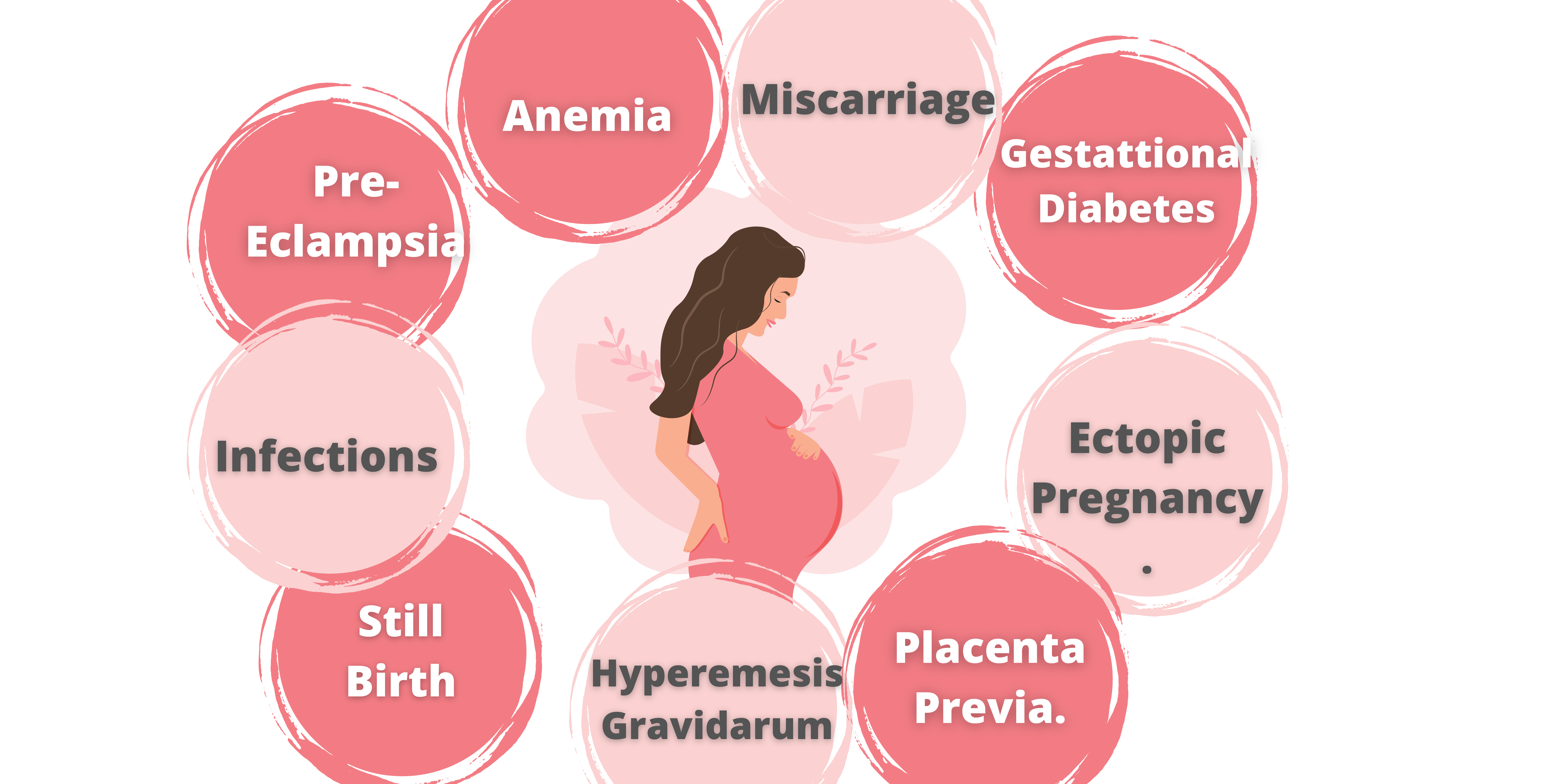
Pregnancy is a joyous time, but it can also bring about unexpected medical complications that can affect both the mother and baby. Some of the most common complications include gestational diabetes, preeclampsia, preterm labor, placenta previa, and miscarriage. Fortunately, with early detection and proper treatment, most of these complications can be managed and even prevented to ensure a healthier and safer pregnancy. Regular prenatal check-ups, proper knowledge and awareness, and prompt reporting of any abnormal symptoms are crucial in promoting better outcomes for both the mother and baby.
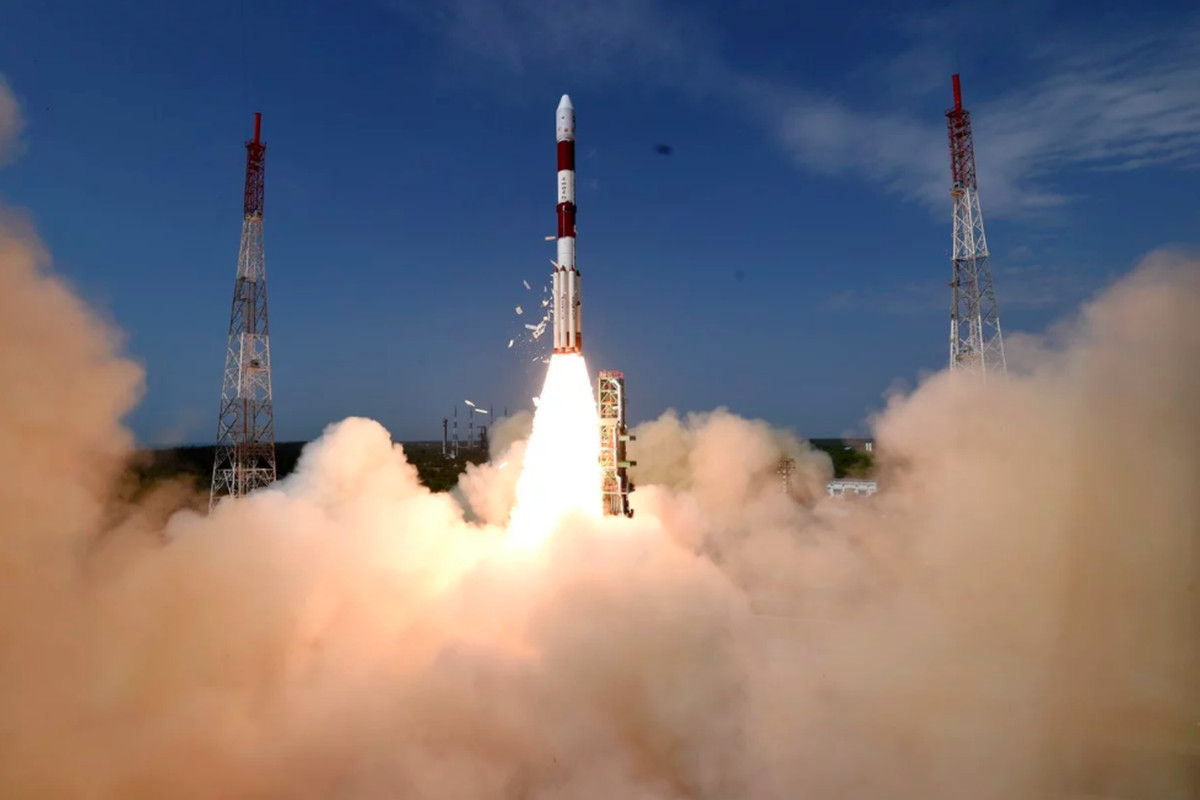
In a rare failure for India's space agency ISRO, their main rocket PSLV encountered problems during its 101st mission. The third stage of the PSLV rocket, which was the most successful launch vehicle for ISRO, experienced issues and couldn't place the earth observation satellite into the orbit as planned. This serves as a reminder of the complexities and risks involved in spaceflight, even for proven vehicles like PSLV.
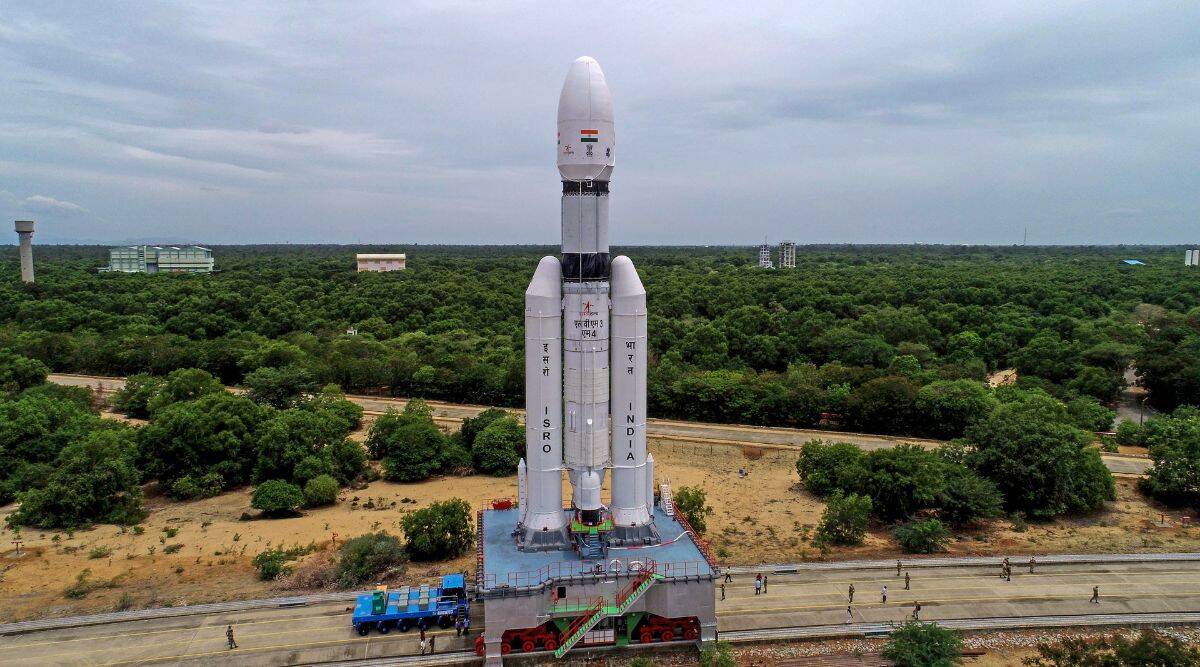
ISRO's mission to launch an Earth observation satellite aboard the PSLV rocket was unsuccessful on Sunday due to a problem in the third stage of the launch vehicle. Despite initial success in the first and second stages, a drop in chamber pressure prevented the mission from being completed. ISRO plans to regroup and attempt the mission again in the future, with the goal of ensuring a debris-free launch. This mission aimed to provide essential remote sensing data for various applications, including disaster management and national security.

A new high-altitude atmospheric monitoring station has been established in Udhampur, Jammu and Kashmir, to better understand the formation of ice crystals in clouds and their impact on rainfall. This cutting-edge facility will be the first in India to enable the study of ice nucleating particles (INPs), the rare and hard-to-detect tiny particles that are the starting points for the formation of ice crystals in clouds. By bridging this critical information gap, scientists hope to improve their ability to model cloud behavior and make more accurate precipitation predictions, especially for extreme events. The new center, which is located at 2,250 meters above sea level, was inaugurated last week and will collaborate with Swiss scientists from ETH Zurich to conduct INP studies. This facility will offer unique insights and contribute to our understanding of precipitation processes worldwide.